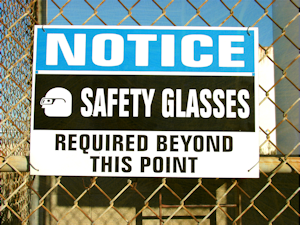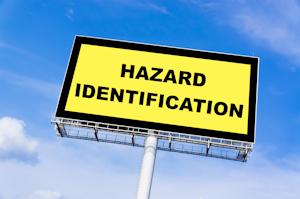
Did you come to work on June 1, 2018 facing the reality that you need a health and safety program for your company? Due to the updates that came into effect that day from the Alberta OHS Act, are you getting a bit overwhelmed or confused? Daunted by all the work you have ahead of you to get a program created and implemented?
Here is a quick read for you to help get yoiu started on the task . Take it one step at a time and you’ll get through it!
But if you ever get to the point of exhaustion or overwhelmed, know that we are just a call or e-mail away. Our experts have many years of experience in creating and implementing industry-specific health and safety programs, and we can help you too.
Why Now?

Although health and safety programs are not new and many larger companies already use this well established tool for safety management, Alberta Occupational Health and Safety (OHS) only just now requires companies with 20 or more employees to have a health and safety program. In the past, the legislation listed no requirement for health and safety programs, although they are required by most other jurisdictions in Canada. This is just one of the updates that was made to get in sync with other jurisdictions and industry best practice.
In our previous article entitled Alberta OHS Changes: What You Need to Know About the New OHS Regulations Implemented on June 1st, 2018, we summarized the major changes to the Alberta OHS Act that came into effect on June 1, 2018. Now in this article, we’ll dig deeper into the updated requirement for Alberta companies with 20 or more employees to have a formal health and safety program and help you get an idea of what is required and how you can get started on creating one.
What Is the Point of a Health and Safety Program?

A health and safety program provides a management system for your company to rely on. It helps your company maintain the required due diligence and standard of care mandated by the government and necessary to protect your workers and work environment.
The Alberta OHS Act, Section 1(w) defines a health and safety program this way: “a coordinated system of procedures, processes and other measures that is designed to be implemented by organizations in order to promote continuous improvement in occupational health and safety.”
It further defines health and safety in Section 1(v) as including “physical, psychological and social well-being.”
The government has established a list of ten minimum elements you are required to put into your health and safety program, so you are not left guessing how to decide what to put into the program yourself.
We’ll look at those key elements of an effective health and safety program in a minute. First, let’s double check that you actually need a formal program.
Start by Making Sure You Really Need a Program

Section 37 of the Act requires an employer who employs 20 or more workers to establish a health and safety program. Sounds straightforward enough.
But what if your workers are spread over various different work sites? What if they are seasonal and aren’t all employed at the same time? What about subcontractors? Part-timers? How do you count what “one worker” is? Is it a body on a work site? Is it related to the total hours worked daily or weekly or annually?
Now it sounds complicated.
Lucky for you, the government has created a handy resource to help you look at all these complications and determine if you “employ 20 workers” or not. It’s called Do I Need a Health and Safety Program? OHS Information for Workers, Employers, and Prime Contractors.
This downloadable PDF resource also includes phone numbers for OHS that you can call for guidance if you find that your scenario isn’t quite explained in the extensive examples they provide.
Did You Discover You Don’t Need a Program After All? Well, Don’t Get Too Excited.

If it turns out you don’t meet the 20 worker threshold and don’t need a formal program, that doesn’t mean the government is giving you a hall pass on safety. Employers with fewer than the threshold 20 worker limit must still involve workers in hazard assessment and elimination/control of hazards.
This means that besides meeting all the other health and safety requirements that apply to your business from the Alberta OHS Act, Regulation, and Code, you also have to ensure that you have a process for involving your workers in hazard assessment and in eliminating or controlling those hazards. This will mean you’ll need to create and implement that process and train your workers on it.
If you would like help with this training, at Safety Coordination Services we offer the following convenient online courses that can get you started:
- Hazard Assessment Training (75 min.)
- Hazard Identification, Assessment, and Control (120 min.)
You’ve Verified You Need to Create a Program. So What Goes in It?

Thankfully, you don’t have to reinvent the wheel on this. The Act itself specifies the 10 minimum elements that constitute an effective health and safety plan:
- health and safety policy,
- hazard assessment,
- emergency response plan,
- statement of responsibilities,
- work site inspection procedures,
- procedures for multiple employers,
- safety training,
- incident investigations,
- worker participation, and
- program reviews.
If you get to this point and think there’s no way you have the time to deal with all of that, don’t hesitate to give us a call toll free at 1-844-485-3585 or e-mail us to take the job off your hands.
But if you’re determined or might not have the resources at this stage to outsource the work, read on to get familiar with these ten elements.
Element 1: A Health and Safety Policy
The health and safety policy expresses your company’s commitment to health and safety. This is the document that everyone can fall back on when looking for guidance in how to interpret the rest of the plan.
The policy should state the health and safety philosophy of the company and senior management’s commitment to health and safety. Clear and concise phrasing is useful to set the tone of this document.
The Canadian Centre for Occupational Health and Safety gives some practical advice on how to create and implement an effective OHS policy. Check out the online fact sheet from CCOHS entitled Guide to Writing an OHS Policy Statement.
The Alberta government also provides some guidance through a sample policy for you to review in the appendix section of their online PDF entitled Health and Safety Programs: OHS Information for Workers, Employers, and Prime Contractors.
Element 2: A Hazard Assessment
Identify areas or activities that may be dangerous through formal hazard assessments. There are many ways to perform hazard assessments, but two common types are formal and site-specific assessments.
Formal hazard assessments involve general operations. They are often broken down based on how they will affect separate jobs and tasks. The steps to do this kind of hazard assessment are:
- identify types of jobs,
- identify the tasks associated with each type of job, and
- identify potential hazards for each task.
The CCOHS has some helpful resources you could review for this type of hazard assessment:
Site-specific hazard assessments take place at new work sites or at work sites with changing conditions. Whenever conditions change, a new assessment must be completed to identify any new hazards. A generic field level hazard assessment card related to this type of hazard assessment is available for purchase in printed format through the Alberta Construction Safety Association.
The purpose of a hazard assessment is to identify and eliminate hazards whenever possible. If a hazard cannot be removed, it must be controlled. Alberta’s OHS Code Identifies the progression of control methods as follows:
- First choice: Install engineering controls to limit worker exposure to risk.
- Second choice: Implement administrative controls to regulate work around the hazard.
- Third choice: Give worker’s personal protective equipment (PPE) when working with the hazard.
Element 3: An Emergency Response Plan
Emergency situations often result in uncertainty and chaos. Emergency response plans help to mitigate risk and loss. The plan must include what people, resources, and procedures are needed in case of an emergency. A good emergency response plan includes the following:
- a list of possible hazards or scenarios,
- a list of possible consequences from each scenario,
- the required actions for each scenario,
- an inventory of resources needed to deal with the event, and
- designated personnel to carry out specific response duties.
Training and periodic drills should also be part of the plan. Everyone needs to practice so they can perform during a real emergency.
A sample template for an ERP is available for you to review in the appendix section of Alberta OHS’s online PDF entitled Health and Safety Programs: OHS Information for Workers, Employers, and Prime Contractors.
Element 4: Statement of OHS Responsibilities of the Employer, Supervisors, and Worker at the Work Site
Employers must ensure the health and safety of all work site parties. In addition, the OHS Act now includes the explicit responsibility for employers to ensure that workers are not subject to and do not participate in workplace violence or harassment.
Employers appoint supervisors to carry out many of the functions defined as employers’ responsibilities. The employer must ensure that the supervisor is competent and can carry out the required duties. These duties include taking precautions to protect workers, enforcing mandatory PPE use, and advising workers of all foreseeable hazards.
Workers have a duty to follow regulations and protect their own health and safety. The OHS Act has now changed to express a commitment that workers not participate in harassment or violence.
By the way, if it seems like a challenge to get figure out the new requirements related to workplace harassment or violence, we can help you get up to speed in a day with our 8-hour Dealing with Workplace Violence course.
Element 5: Work Site Inspections – Schedule and Procedures
Work site inspections provide a means for ongoing identification of hazards on a work site. An inspection schedule and procedure will guide the designated inspectors through this process. Regular inspections are documented on an inspection report for reference. The information needed to complete the report includes:
- a diagram of the work area,
- an equipment inventory, and
- a hazardous product or chemical inventory.
It’s also a good idea to make a comprehensive checklist for inspectors to follow (see samples available from CCOHS).
Identifiable hazards should be clearly outlined. These include:
- inadequate machine guards,
- unsafe work practices,
- biological hazards,
- ergonomic hazards,
- physical hazards, and
- psychosocial hazards.
The frequency of work site inspections varies depending on work site factors. If there are many changing variables, inspections should happen frequently. The CCOHS recommends performing work site inspections at least as frequently as committee meetings. As outlined in our previous article, frequency of meetings should be determined by the employer and held during work hours.
Element 6: Procedures for Another Employer to Work at Work Site
The prime contractor coordinates the health and safety procedures for multiple employers at a work site. This includes self-employed workers. The procedures must include:
- communication of official work site safety policies to all parties,
- criteria for selecting employers at the work site, and
- regular monitoring.
Element 7: Health and Safety Orientation and Training for Workers and Supervisors
The OHS Act requires all new hires to receive adequate training to teach them how to do their job safely. Inexperienced workers tend to be involved in more incidents than experienced workers. Safety orientation training can help reduce the incident rate and protect workers. This training should cover all aspects of the job including equipment, processes and an overview of the work site.
Initial training is needed to expose the worker to the required material. Continued practice and assessments ensure comprehension and consistency. Brochures outlining the learned safety processes can be distributed to remind employees of safe work practices. Health and safety components on performance reviews can help with continued employee commitment.
The CCOHS has an orientation checklist you may find helpful.
A sample worker orientation record template is also available for you to review in the appendix section of Alberta OHS’s online PDF entitled Health and Safety Programs: OHS Information for Workers, Employers, and Prime Contractors.
Element 8: Procedures for Investigating Incidents, Injuries and Refusals to Work
Investigative procedures should be in place before an incident occurs. This will ensure timely and effective responses. Refusals to work will be investigated if the issue is not solved right away.
Under the new OHS Act, all incidents resulting in hospital visits must be reported to the OHS contact centre at 1-866-415-8690 (780-415-8690 in Edmonton). The Act also requires employers to report all potentially serious near misses. This can be done online using the PSI Online Reporting Service.
CCOHS has an excellent summary on incident investigation including steps involved, root cause analysis, follow-up, and more.
Element 9: Procedures for Worker Participation in Work Site Health and Safety
Workers must be aware of the company OHS program and their right to participate. Procedures should allow for worker participation in investigations and inspections. The wording of this section should reflect a willingness to take worker complaints and safety concerns seriously.
To achieve worker participation, many companies create a Joint Worksite Health and Safety Committee (JWHSC). This committee allows for regular meetings and discussions between workers and management. This is a great way to allow workers to participate in health and safety initiatives. A JWHSC is now mandatory for employers with over 20 employees in Alberta. So now is the time to implement this powerful implementation method. Check out our previous article for more information on JWHSCs.
Alberta OHS also has a downloadable PDF on this topic entitled Joint Work Site Health and Safety Committees: OHS Information for Workers, Employers, and Prime Contractors.
Element 10: Procedures for Reviewing and Revising the OHS Program.
The health and safety program should be reviewed and updated at least every three years. A change in operations on the work site should also trigger a review.
Official safety audits can also provide a means for evaluating safety program effectiveness. Safety audits use a weighting system to get an overall sense of safety outcomes at a work site. A series of questions are given a weighting factor depending on their importance. Records, observations, interviews, and questionnaires are used to determine the effectiveness of safety controls.
At Safety Coordination Services, we offer safety auditing for legislative compliance. We also offer regulatory compliance assessment to the specifications of various standard associations including upstream oil and gas, Alberta Construction Safety Association, Alberta Safety Council, and Partners In Injury Reduction. If you wish to create a health and safety program and pursue this type of certification involving auditing, feel free to contact us with any questions you may have.
You Set the Tone

When creating and implementing your new health and safety program, remember that support from management is very important. Without it, workers may start to slack on their part in the safety protocol and health and safety will start to slip between the cracks. Some ways to avoid this are as follows:
- Ongoing evaluation and training help remind employees about the company’s commitment to safety.
- Regular meetings encourage worker participation.
- Designated roles and health and safety reviews keep people accountable.
- By documenting and updating, safety programs stay fresh and relevant in the workplace.
Consistency and commitment are key. The ten elements of a safety program work together to keep workers safe and maintain a productive environment.
Take a Deep Breath and Dive In

We hope this was a helpful introduction to the work of creating and implementing a new health and safety program that may be ahead for you. As you get ready to dive into all the researching and writing and consulting with your supervisors and worker experts, keep in mind that the point of this is not useless busy-work.
It can be easy to forget why you’re doing all this when you’re buried in templates and checklists and JWHSCs and FLHAs and JSAs and SWPs and all those health and safety acronyms.
The end result of this work will be a system to help make sure your workers and the people they encounter and work with all get home safely at the end of their day to their families and loved ones.
And that is a goal that’s most definitely worth your effort.
